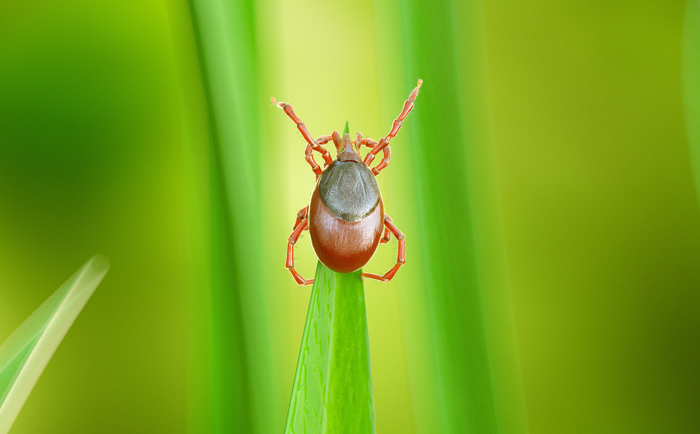Lyme Disease
Lyme Disease
Prevention Tips
Follow the steps below to help reduce your chances of acquiring a tick-borne disease.
-
Light-colored clothing
Wear light-colored clothing ─ makes it easier to spot ticks. -
Long-sleeved clothing
Wear long-sleeved shirts and pants. Keep pant bottoms tucked into socks or boots. -
Socks and shoes
Wear socks and enclosed shoes ─ not sandals. -
Remain on trails
Remain on trails and avoid hiking through tall vegetation. -
Apply repellants
Other repellents found to be as effective as DEET include: repellents with picaridin, oil of lemon eucalyptus or 2% soybean oil, according to the Centers for Disease Control and Prevention (CDC). (Their length of effectiveness equals products containing 10% DEET.) -
Tick checks
Perform tick checks after you come in from outdoors. Check for ticks the following day, as well, since ticks will become engorged (larger from feeding) and may be easier to spot. Ticks prefer warm, moist areas where the skin is thin (behind the knees, groin, belly button, armpits, behind the ears, hairline). -
Checking children for ticks
When checking small children for ticks, pay close attention to their scalp and neck region, since they’re lower to the ground. -
Showers and ticks
Shower after being outdoors to wash off loose ticks, but remember water will not rinse off or kill attached ticks. -
Protect your ticks
Protect your pets with tick repellents to reduce chances of ticks being brought indoors. Check outdoor pets for ticks. Merely rinsing off your dog or cat with water will not kill ticks. Note: Deer ticks can be submerged in water for 2-3 days and remain alive. Check clothing carefully and place in hot dryer for 15 minutes before washing to effectively kill ticks. -
Yard care
Keep yard clear of excessive vegetation and brush.
More About Lyme Disease
Misdiagnosing Lyme disease
Lyme disease and syphilis have both been coined “the great imitator.” Lyme disease symptoms may be similar to other medical conditions, making diagnosing a challenge. The Borrelia burgdorferi (Bb) spirochete is an evasive organism which can penetrate virtually any organ or system in the body.
Learn More
Learn More
About Ticks
Ticks are tiny parasites that feed on the blood of their hosts (humans and animals) in order to survive and advance to the next life cycle stage. Most ticks have four stages: egg, larva, nymph and adult. The larva and nymph need a blood meal to move to the next stage. Ticks are extremely small, with the nymph the size of a pinhead.
Learn More
Learn More
Lyme Disease Co-infections
Co-infections can be challenging to diagnose, as clinical features often overlap with many of the other tick-borne diseases, including Lyme disease. However, the importance of identifying and treating polymicrobial infections is critical in getting a patient well.
Learn More
Learn More



